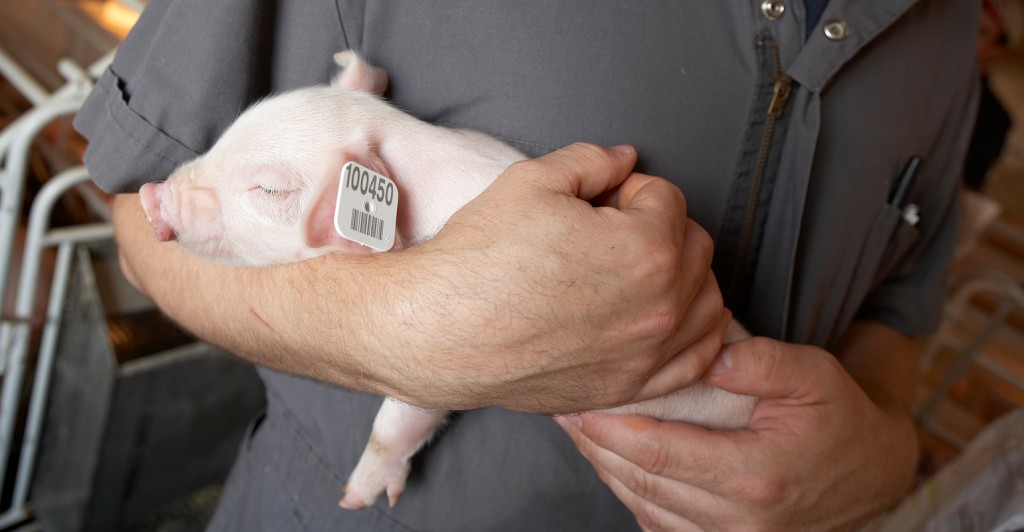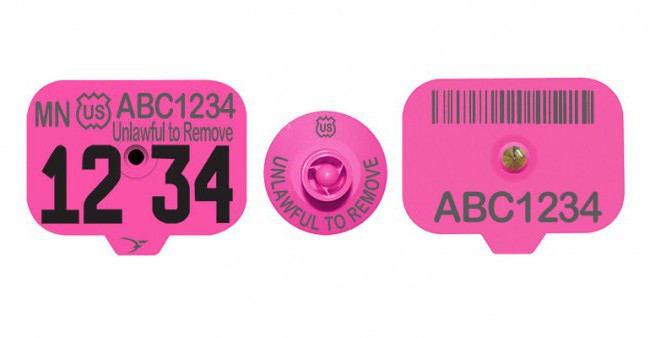
Animal identification is step one to providing the production data needed to manage a swine operation and make the decisions required for herd improvement.
Why?
Producers have long known that identifying genetics, measuring performance, tracking animal inventory or tracking treatments are important and valuable reasons to use livestock identification. Simply put, you can’t do these things without the use of ID devices. Whether you are using traditional tags or possibly electronic identification tags (EID) or a combination of both, what you do on your operation is made easier by the use of an ID product.
Inventory, piglets per litter, breeding information, performance data, treatments and withdrawal records are all tied to an animal ID. From simple to complex, you design the process that best works for your operation. Many producers have decided to use electronic ear tags to help increase the accuracy of their record-keeping and reduce the labor needed to perform routine tasks that require identifying individual animals. The use of EID in swine continues to grow and become the norm in group sow housing as electronic sow feeders continue to become more prominent in our market. So a single tag can be used for individual sow feed management in addition to the information commonly managed with an ID tag.
How?
Pick the product. From piglet tags to the center post, breeding herd tags, there are different products for an animal’s age. “Mating the proper tag with the production phase/age of the pig is important to reach your identification goals, ease of application and retention,” according to Steve Bretey, Swine Business Manager for Allflex USA/ Destron Fearing. “Plan ahead, and place your order two or three weeks before needing them.”
Always use the same brand of applicator and tags. There are slight differences between tags, and it is important to use the proper applicator. (Following package directions is also a big help in getting the correct applicator with the tag.)
Use disinfectant on the stem of the male tag. Just dip the stem in the disinfectant, not the whole tag. This action will help lubricate the tag and improve the cleanliness of the application process.
Different numbering systems can be used on visual ear tags, but the best is simple to use and understand. Always make the management number the biggest number on the tag, knowing it’s the most important. You can also add sire codes, genetic lines, etc. to the tag with other smaller numbers. Last but not least consider color and important option. Colors can represent genetic lines, age, location, etc. to help more quickly identify and manage your animals.
 Official Tags-Swine premises tags continue to be one of the most successful industry driven programs in the US. Cull Sows and Boars are required to be tagged with an official tag before entering harvest channels. These can be ordered in a variety of colors and are an integral part of food safety and traceability for our swine industry. They are a perfect example of a custom tag that combines color, large ID numbers and other relevant information on the tag.
Official Tags-Swine premises tags continue to be one of the most successful industry driven programs in the US. Cull Sows and Boars are required to be tagged with an official tag before entering harvest channels. These can be ordered in a variety of colors and are an integral part of food safety and traceability for our swine industry. They are a perfect example of a custom tag that combines color, large ID numbers and other relevant information on the tag.

When traveling with show pigs, remember to have them tagged with an official 840 tag. This ID represents that the animal was born in the US and can move throughout the country and attend livestock shows.
For more information Tags












 Україна
Україна Méjico
Méjico


